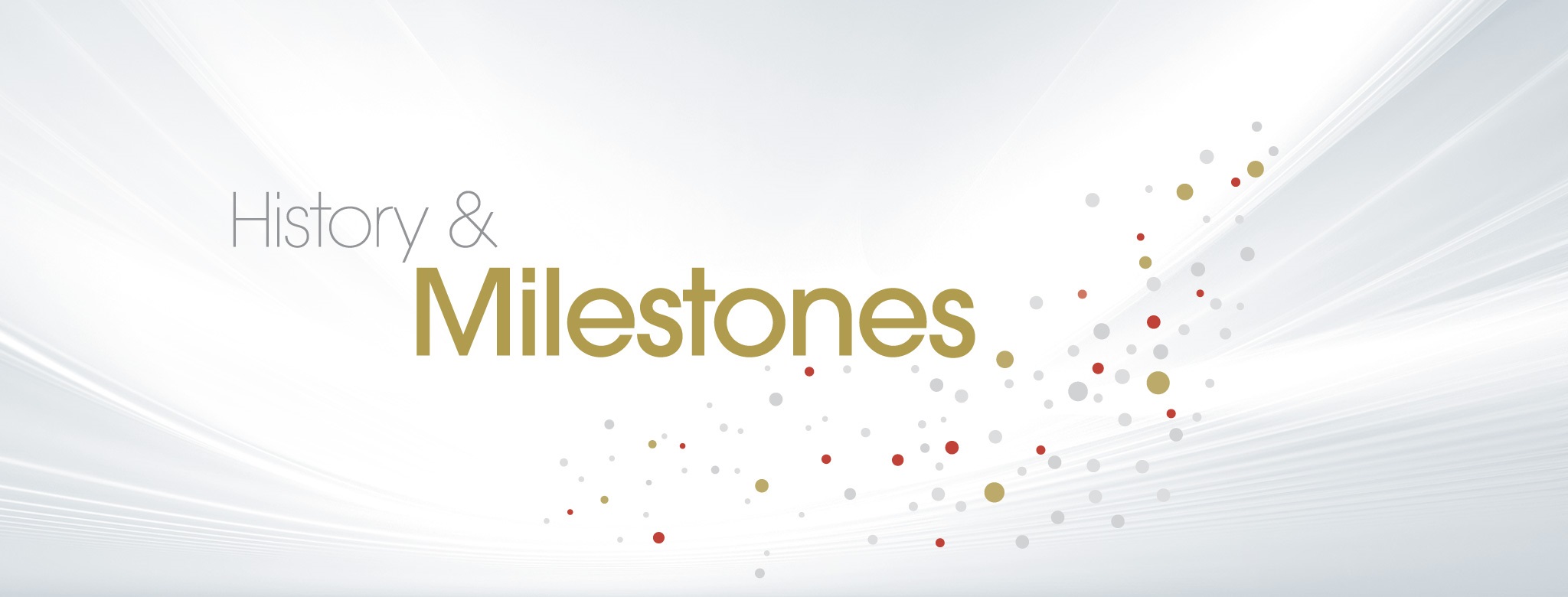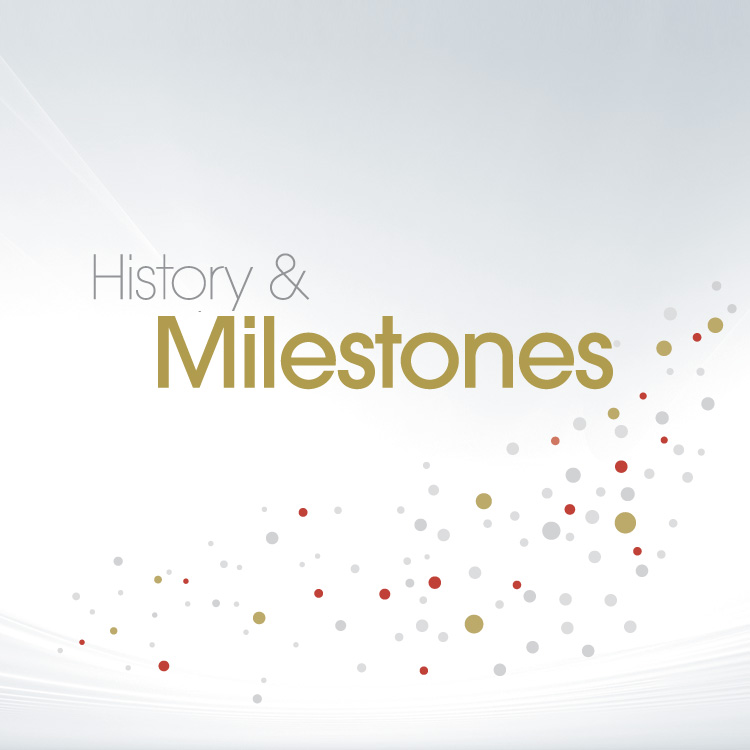MILESTONES

July 1968
The idea of introducing specialist registration in Hong Kong was first considered by the Medical Council of Hong Kong (MCHK).
1971
The United Kingdom Government accepted the recommendation of the Royal Commission on Medical Education that a system of specialist registration be introduced, and confirmed its intention to introduce the necessary legislation to enable the General Medical Council to maintain specialist registers.
July 1982
Working Party on a specialist register for Hong Kong, which was formed by the MCHK in November 1979, concluded in its final report that the postgraduate training of doctors in Hong Kong was inadequate. The report also recommended that: ’the professional training of doctors intending to specialise be improved as a necessary step towards the setting up of a specialist register.’
October 1986
The Government established a Working Party on Postgraduate Medical Education and Training under the chairmanship of
Dr. Keith Halnan.
The Government established a Working Party on Postgraduate Medical Education and Training under the chairmanship of Dr. Keith Halnan.
October 1988
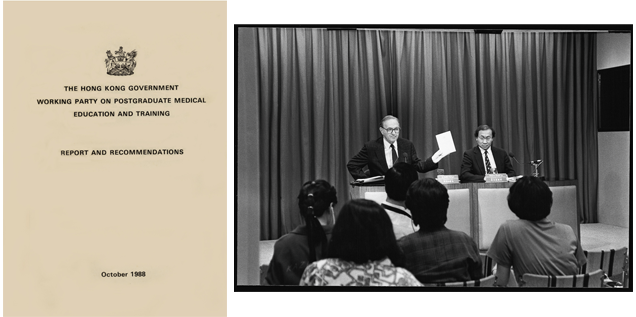
The Working Party on Postgraduate Medical Education and Training produced and submitted a report with recommendations to the Government on 18 October 1988.
The Report recommended that: ’there should be a “Hong Kong Academy of Medicine” composed of Fellows accredited after completion of approved training and prescribed examinations.’
September 1989
On 26 September 1989, on the advice of the Executive Council, the Governor ordered that approval in principle be given to proceed with the establishment of a Hong Kong Academy of Medicine (Academy).
October 1989
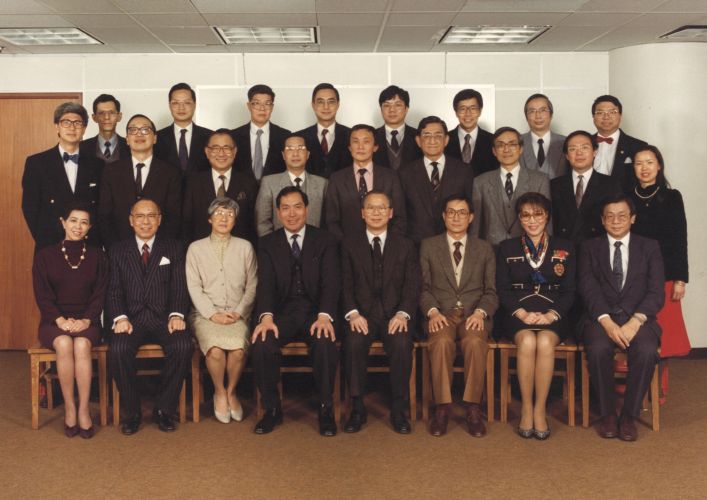
On 13 October 1989, approval was given by the Governor for the appointment of Prof. Sir David Todd as Chairman of the Preparatory Committee.
January – February 1990
21 members nominated by the relevant medical bodies were appointed by the Governor to be members of the Preparatory Committee.
March 1990
The Preparatory Committee held its first meeting.
April 1990
Finance & Administrative Subcommittee (FASC) noted its terms of reference, which included finding suitable temporary and/or permanent accommodation for the Academy. FASC proposed to raise funds for both capital and recurrent expenses, and discussed formation of a Foundation Fund.
May 1990
The medical profession and educational institution were invited to participate in an open competition on the design of
an Academy emblem.
The medical profession and educational institution were invited to participate in an open competition on the design of an Academy emblem.
June 1991
On 6 June 1991, the Hong Kong Academy of Medicine Foundation Fund (HKAMFF), appointed by the Preparatory Committee, was incorporated under the Companies Ordinance as a tax-exempt charitable organisation. It was established for the purpose of raising funds for the formation and administration of the Academy.
December 1991
The Preparatory Committee completed the draft legislation of the HKAM Ordinance (Cap. 419).
March 1992
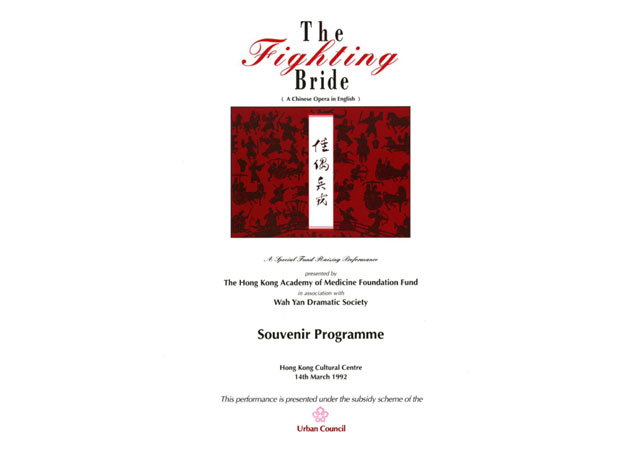
“The Fighting Bride”, a Cantonese opera sung in English, was the big hit of March 1992 and succeeded in raising the very respectable sum of nearly $1.358M for the HKAMFF.
March 1992
The Preparatory Committee had its last meeting on 26 March 1992 and confirmed the final design of the Academy emblem.
The emblem adopted consists of an oval ground containing
an upright staff with a serpent intertwined (the traditional symbol of the medical profession); an open book (symbolising medical knowledge, and on whose pages the four characters of the Chinese motto written by the late Madam Fang Zhaoling appear); a bauhinia blossom (representing Hong Kong at that time and in the post-1997 era); concentric coloured rings of increasing diameter (symbolising ever-increasing medical knowledge and ever-flourishing medical enlightenment);
and a ribbon on which the Latin motto is inscribed.
The Preparatory Committee had its last meeting on 26 March 1992 and confirmed the final design of the Academy emblem.
The emblem adopted consists of an oval ground containing an upright staff with a serpent intertwined (the traditional symbol of the medical profession); an open book (symbolising medical knowledge, and on whose pages the four characters of the Chinese motto written by the late Madam Fang Zhaoling appear); a bauhinia blossom (representing Hong Kong at that time and in the post-1997 era); concentric coloured rings of increasing diameter (symbolising ever-increasing medical knowledge and ever-flourishing medical enlightenment); and a ribbon on which the Latin motto is inscribed.
May 1992
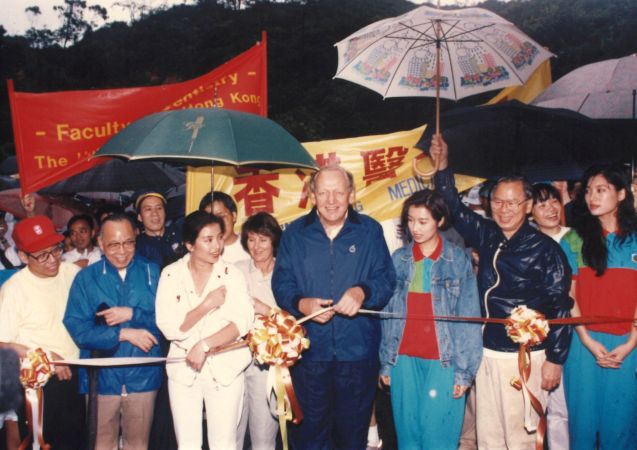
Another major event was the “Walk for the Academy – Walk for Health”, which took place on 30 May 1992 along a trail in the Tai Tam Country Park. The walk was started by the then Chief Secretary Sir David Ford and successfully raised over $1.368M.
June 1992
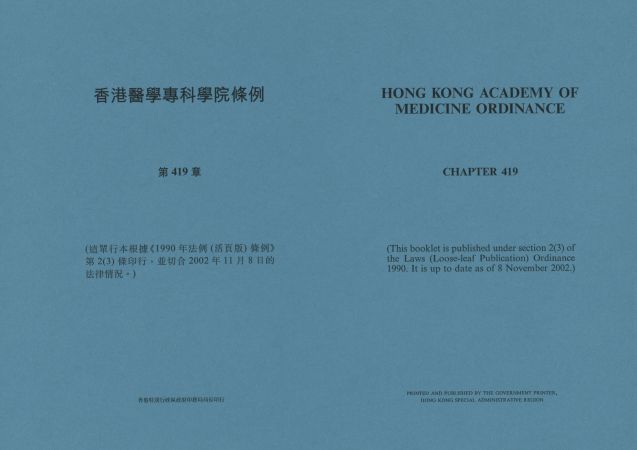
On 25 June 1992, the Hong Kong Academy of Medicine Ordinance (Cap. 419) was enacted by the Legislative Council.
August 1992
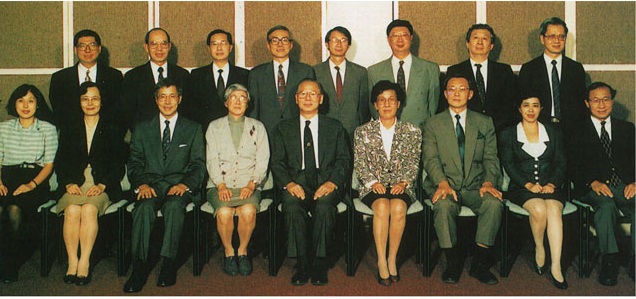
The Hong Kong Academy of Medicine Ordinance (Cap. 419) came into effect on 1 August 1992. An Interim Council was formally established, comprising six Officers and the Presidents of 12 designated Academy Colleges.
The Interim Council formally admitted 12 Academy Colleges:
- The Hong Kong College of Anaesthesiologists
- The Hong Kong College of Community Medicine
- The College of Dental Surgeons of Hong Kong
- The Hong Kong College of General Practitioners (subsequently renamed as The Hong Kong College of Family Physicians)
- The Hong Kong College of Obstetricians & Gynaecologists
- The Hong Kong College of Orthopaedic Surgeons
- The Hong Kong College of Paediatricians
- The Hong Kong College of Pathologists
- The Hong Kong College of Physicians
- The Hong Kong College of Psychiatrists
- The Hong Kong College of Radiologists
- The College of Surgeons of Hong Kong
Two Faculties, namely Ophthalmologists and Otorhinolaryngologists, were also admitted under the College of Surgeons of Hong Kong by the Interim Council.
The Government confirmed its financial commitment, in real monetary terms, of up to a maximum of $10M. In order to encourage fund-raising efforts by the Academy, this grant would be made in matching steps of $1M for every $10M raised.
September 1992
The Interim Council held its first meeting on 3 September 1992. It decided to form a Finance Advisory Committee to look into financial matters, including financial implications of the Academy headquarters.
December 1992
A meeting was held among representatives from the Academy, Health & Welfare Branch and District Lands Office to discuss various proposed sites for the permanent headquarters. Some sites were proposed, including Kowloon Hospital and Freni Home.
January 1993
The Academy was finally notified on 15 January 1993 that the Department of Health would offer a site in Wong Chuk Hang to the Academy after much difficulty in finding a suitable site.
January 1993
The Secretary for Health & Welfare wrote to the Hong Kong Jockey Club (HKJC) to solicit funding support for the construction of the Academy’s permanent headquarters, and indicated that the Government had already committed to assist the Academy with a grant of up to $10M towards construction and operation costs for its headquarters.
May 1993
Hospital Authority agreed to provide two to three floors at Pamela Youde Nethersole Eastern Hospital (PYNEH) to the Academy as a temporary office, at a token rent of $1 per annum.
May 1993
On 21 May 1993, the Interim Council agreed on a dark-green, based with silver trim as the appropriate colour combination.
September 1993

The Academy Secretariat moved into its temporary headquarters at Multicentre Block A of the PYNEH.
October 1993
On 20 October 1993, the HKJC Charities Trust confirmed a grant of $165M on consideration that the building would be named after the HKJC.
December 1993

The Academy’s inaugural ceremony was held on 9 December 1993 and was officiated by the Governor, the Rt. Hon.
Mr. Christopher Patten. The ceremony was attended by over 167 overseas dignitaries during which over 2,000 Fellows were admitted according to the admission criteria set by the Interim Council.
The Academy’s inaugural ceremony was held on 9 December 1993 and was officiated by the Governor, the Rt. Hon. Mr. Christopher Patten. The ceremony was attended by over 167 overseas dignitaries during which over 2,000 Fellows were admitted according to the admission criteria set by the Interim Council.
January 1994
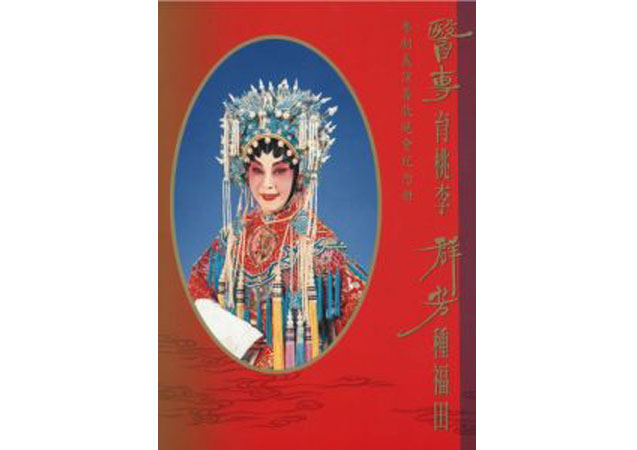
Building on the success of “The Fighting Bride”, a more ambitious project in conjunction with the Kwan Fong Charitable Foundation was staged. The joint fund-raising opera was held on 6-7 January 1994 at the Cultural Centre and raised $12M.
February 1994
On 22 February 1994, the Executive Council approved additional government commitment, including a free land grant for the building of the Academy in Wong Chuk Hang.
July 1994

The interim period officially ended on 19 July 1994 when the first Annual General Meeting was held and Prof. Sir David Todd was elected the first President of the Academy. The meeting was held in conjunction with the first Academy’s Fellowship Conferment Ceremony.
March 1995
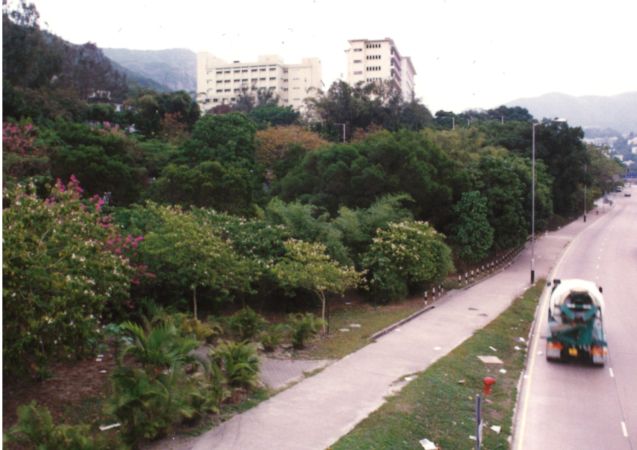
On 23 March 1995, the land grant was formally executed. The Academy took over the site in Wong Chuk Hang.
March 1995
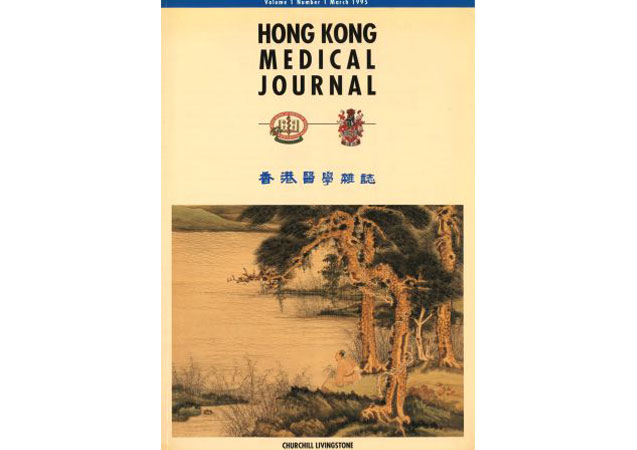
The Hong Kong Medical Journal, a joint publication of the Academy and the Hong Kong Medical Association, was published as a quarterly journal. Since 2002, it has become
a bi-monthly publication.
The Hong Kong Medical Journal, a joint publication of the Academy and the Hong Kong Medical Association, was published as a quarterly journal. Since 2002, it has become a bi-monthly publication.
May 1995
The Academy Council approved the formation of a Joint Building and Finance Committee to monitor the building project until its completion.
October 1995
On 2 October 1995, the Academy admitted another two new Academy Colleges, namely the College of Ophthalmologists of Hong Kong and the Hong Kong College of Otorhinolaryngologists.
November 1995
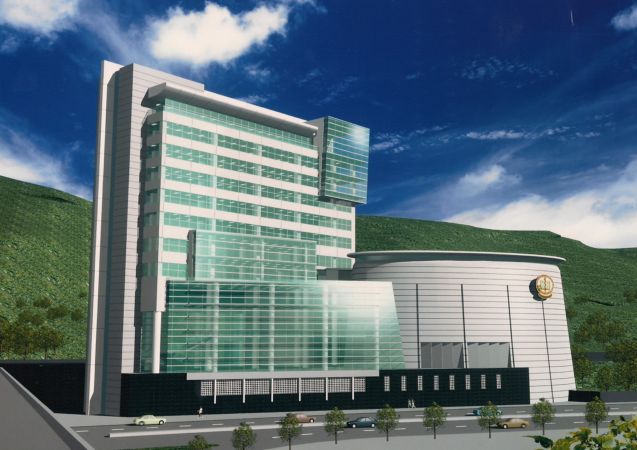
The Academy Council formally approved the design and budget of its headquarters.
April 1996
The first mandatory Continuing Medical Education (CME) cycle commenced in April 1996 and, by July 1997, all colleges had begun their CME cycles.
June 1996
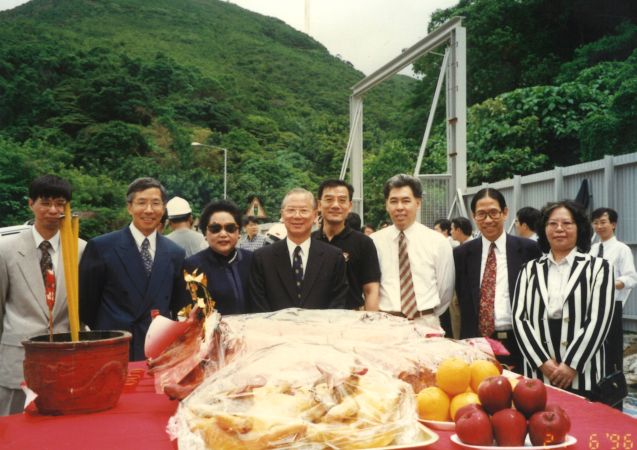
A roast pig cutting ceremony was held at the construction site of the Academy’s headquarters.
Januray 1997
On 16 January 1997, the Academy admitted another new Academy College, The Hong Kong College of Emergency Medicine, increasing the total number of Academy Colleges to 15.
May 1997
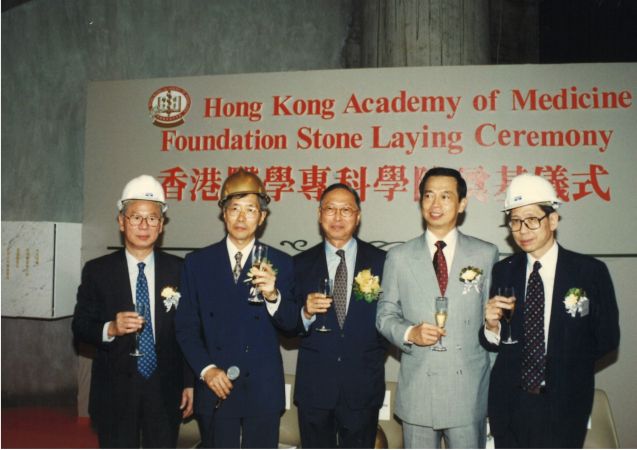
The Academy’s Foundation Stone Laying Ceremony was held on 20 May 1997 and officiated by the Academy’s President,
Prof. Sir David Todd and the then Chairman of the HKJC,
Mr. Wong Chung-hin.
The Academy’s Foundation Stone Laying Ceremony was held on 20 May 1997 and officiated by the Academy’s President, Prof. Sir David Todd and the then Chairman of the HKJC, Mr. Wong Chung-hin.
June 1998
The Occupation Permit (OP) of the Academy’s headquarters was issued by the Buildings Department on 2 June 1998.
October 1998
On 1 October 1998, Bylaw 16 was rescinded, following the Academy Council’s earlier decision that in due course when the exit examinations were in place, all doctors must pass such
an assessment before they could become Fellows of the Academy.
On 1 October 1998, Bylaw 16 was rescinded, following the Academy Council’s earlier decision that in due course when the exit examinations were in place, all doctors must pass such an assessment before they could become Fellows of the Academy.
October 1998
Construction works of the Academy’s headquarters were completed on 1 October 1998. The Academy and Colleges secretariats moved in.
November 1998
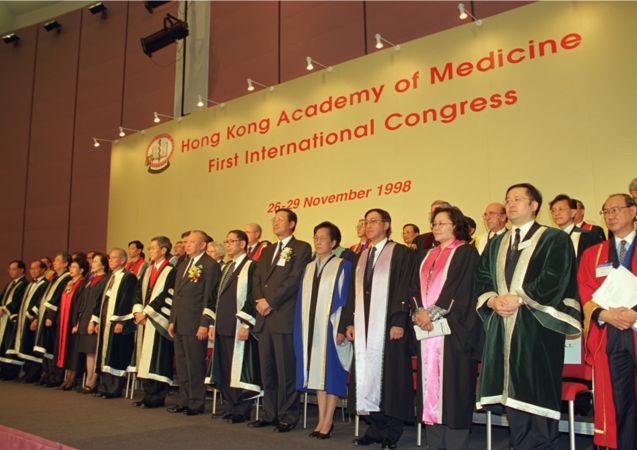
The opening of the Academy’s headquarters was officiated by the then Chief Executive of the Hong Kong Special Administrative Region, the Hon. Tung Chee-hwa on
26 November 1998. The Academy also held its first International Congress on the same day.
The opening of the Academy’s headquarters was officiated by the then Chief Executive of the Hong Kong Special Administrative Region, the Hon. Tung Chee-hwa on 26 November 1998. The Academy also held its first International Congress on the same day.
April 2000
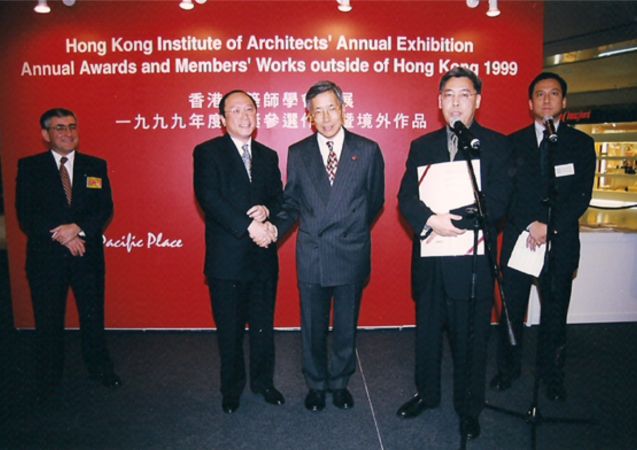
The Hong Kong Academy of Medicine Jockey Club Building was awarded the 1999 Certificate of Merit by the Hong Kong Institute of Architects.
October 2004

On 8 October 2004, the Academy signed an Memorandum of Understanding (MOU) with the Department of Health of the Macao SAR Government to provide assistance in accreditation assessment for specialists.
April 2005
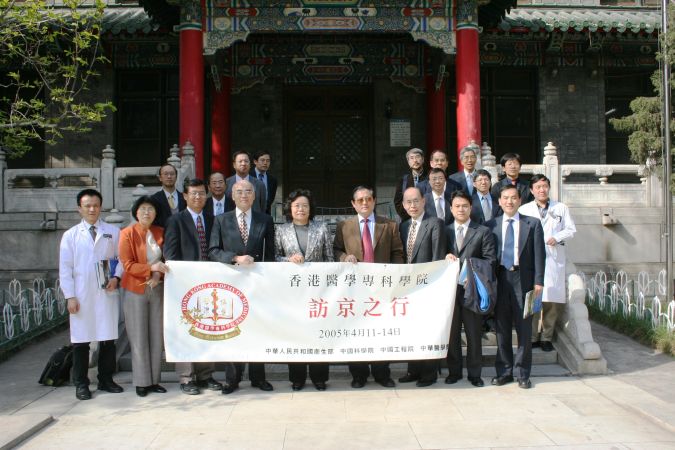
A 18-person delegation of the Academy visited Beijing in April 2005. Besides attending the 90th Anniversary and the 23rd National Representative Meeting of the Chinese Medical Association, the delegation had meetings with the Vice Chairman of the Standing Committee of National People’s Congress, the Ministry of Health, Hong Kong and Macao Affairs Office of the State Council, Chinese Academy of Engineering, Chinese Academy of Sciences, Chinese Academy of Medical Sciences & Peking Union Medical College, Peking Union Medical College Hospital, Beijing United Family Hospital & Clinics, and the Association of Medical Universities & Colleges in China. The Academy delegation had fruitful discussion and exchanged views with these organisations on various topics including specialist registration system, exchange programmes on training and CME.
April 2006
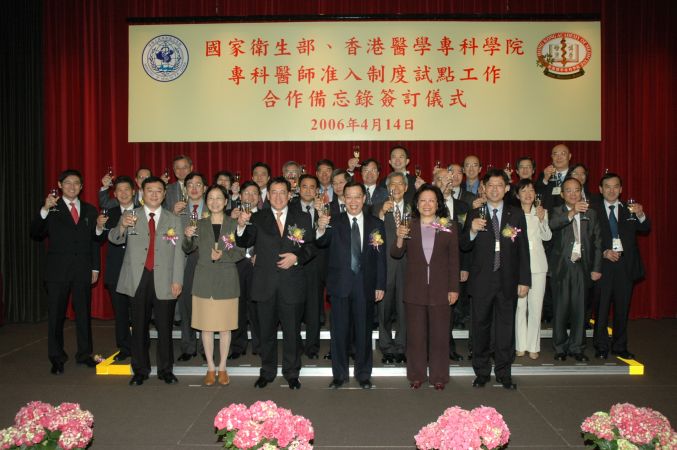
On 14 April 2006, the Academy signed an MOU with the Ministry of Health for collaboration on specialist training, accreditation and registration in the Mainland.
December 2007
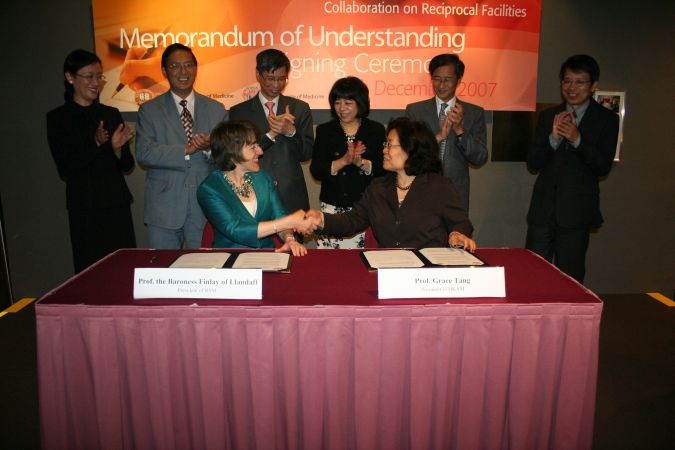
The Academy signed an MOU with the Royal Society of Medicine for reciprocal use of facilities by members of both organisations.
March 2009
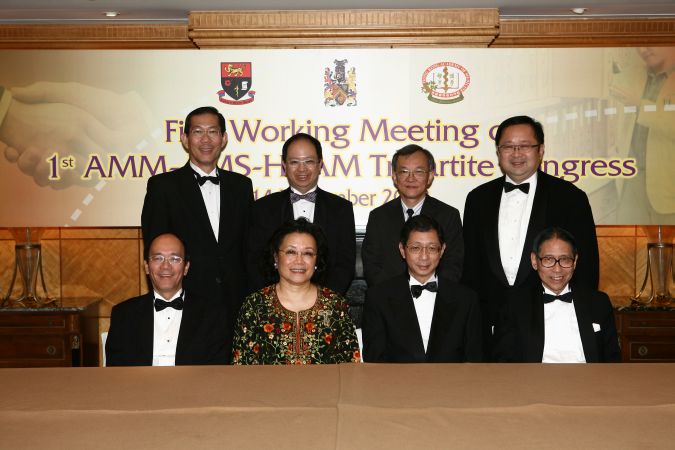
On 10 March 2009, the Academy (HKAM) signed an MOU with the Academy of Medicine of Malaysia (AMM) and the Academy of Medicine, Singapore (AMS), seeking to consolidate and strengthen links amongst the three academies in form and substance of the AMM-AMS-HKAM Tripartite Congress of Medicine. The Tripartite Congress would be held every 3 years, to be hosted by the three academies by rotation.
November 2010
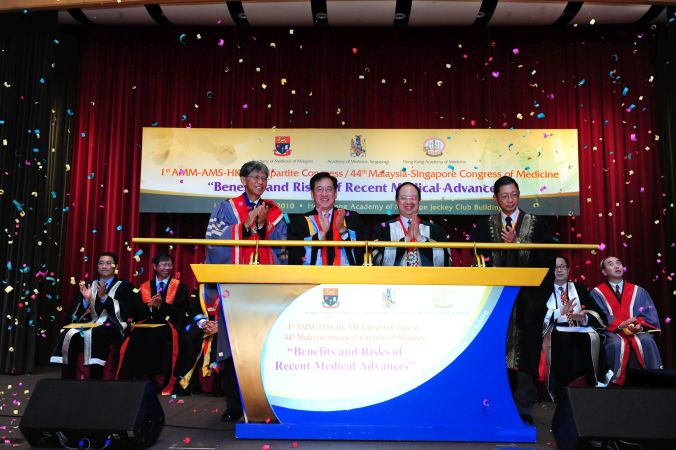
1st AMM-AMS-HKAM Tripartite Congress was inaugurated at the Academy on 12 November 2010.
July 2013

In July 2013, the Academy signed an agreement with the Center of Medical Simulation, seeking to promote patient safety, medical education and research using simulation in Hong Kong.
December 2013
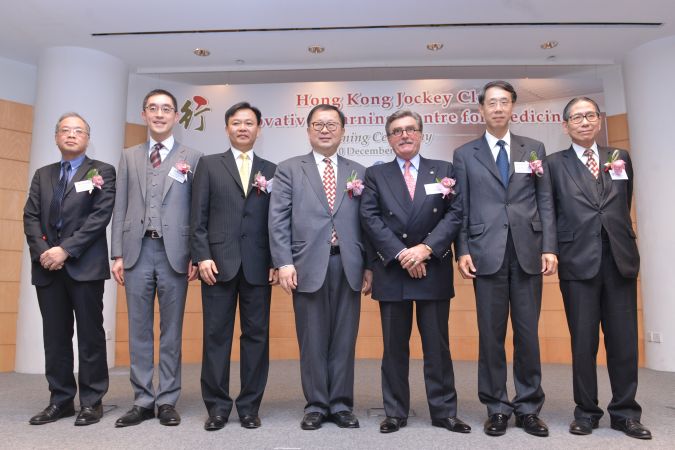
The Academy’s funded project, the HKJC Innovative Learning Centre for Medicine, was officially opened on 10 December 2013.
August 2014
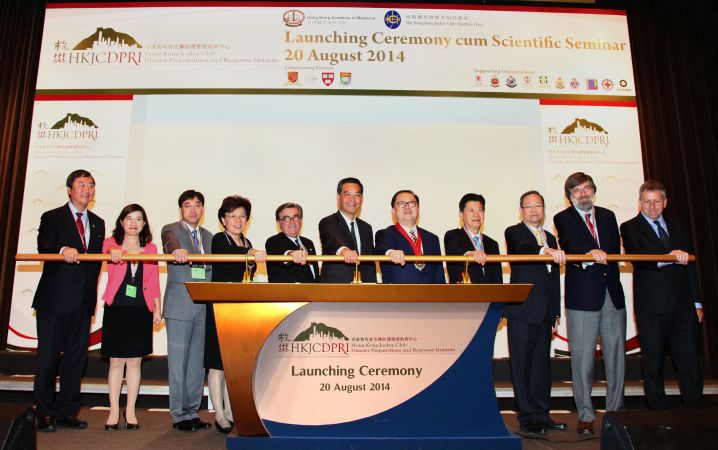
Another funded project of the Academy, the HKJC Disaster Preparedness and Response Institute was officially established on 20 August 2014.
October 2015
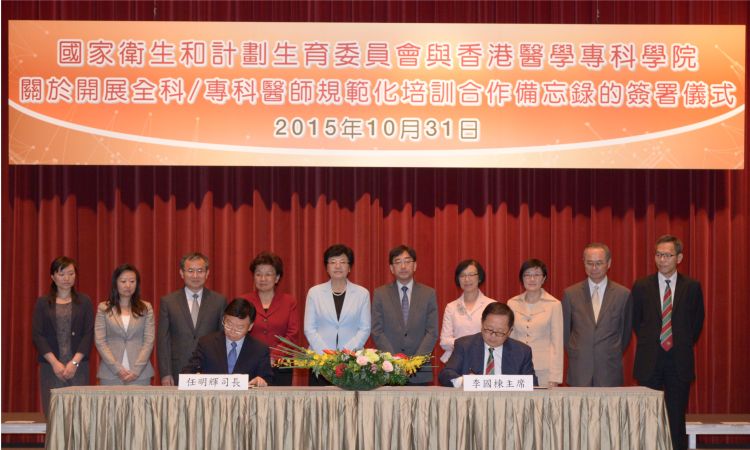
On 31 October 2015, the Academy renewed the MOU with National Health and Family Planning Commission to extend and continue the collaboration in training of general practitioners and medical specialists for the establishment of “Standardisation of General / Specialist Medical Training” in the Mainland.
December 2018
The Academy’s 25th Anniversary Congress will be held on
7-9 December 2018.
The Academy’s 25th Anniversary Congress will be held on 7-9 December 2018.
